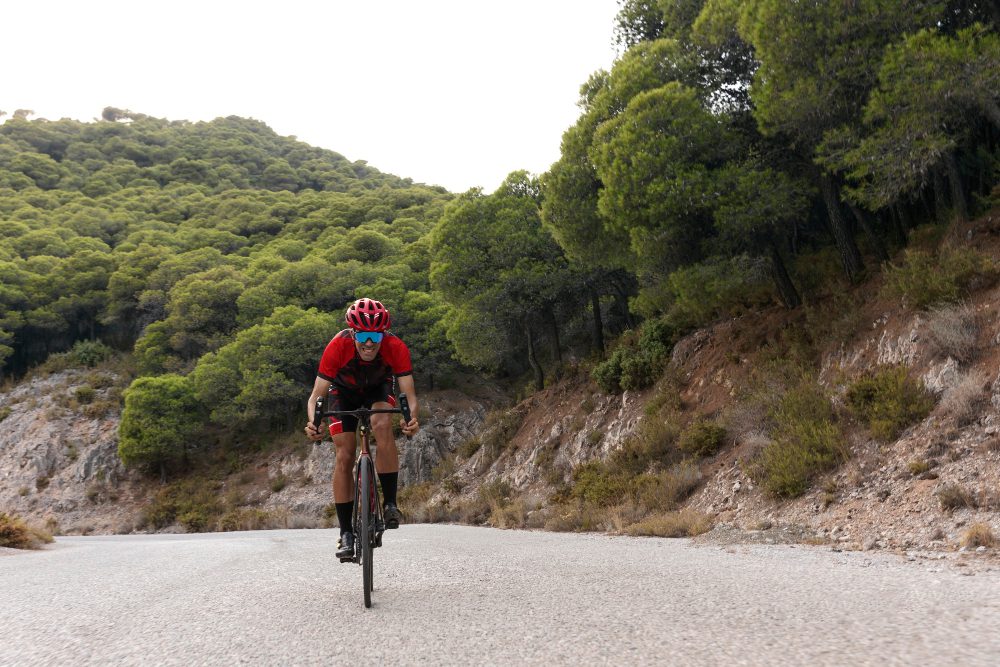What is cycling syndrome?
Cycling syndrome, also known as bicycle syndrome or cyclist’s syndrome, refers to a set of physical and psychological symptoms associated with long hours of cycling. It is a condition that affects both amateur and professional cyclists, and it has become increasingly prevalent in recent years.
Symptoms of cycling syndrome
The symptoms of cycling syndrome can manifest in various ways, affecting different parts of the body. Physical symptoms include:
- Numbness and tingling: Cyclists often experience numbness or tingling in their hands, feet, or groin area. This is caused by prolonged pressure on the nerves in these areas.
- Lower back pain: Cycling for extended periods can lead to lower back pain due to the repetitive motion and strain on the muscles.
- Neck and shoulder pain: The position of the body while cycling can cause strain on the neck and shoulder muscles, leading to discomfort and pain.
- Saddle sores: Friction and pressure from the bike seat can cause skin irritations known as saddle sores, which can be painful and may even lead to infection.
In addition to physical symptoms, cycling syndrome can also have psychological effects. Long hours on the bike can cause:
- Fatigue and exhaustion: Cycling requires significant physical effort, which can result in fatigue and exhaustion, both during and after rides.
- Stress and anxiety: Professional cyclists, in particular, face immense pressure to perform well, which can lead to increased stress and anxiety levels.
- Burnout: Continuous training and demanding schedules can contribute to burnout, where cyclists may experience a loss of motivation and a decline in their performance.
Causes of cycling syndrome
There are several factors that can contribute to the development of cycling syndrome. These include:
- Poor bike fit: Incorrect bike fit that doesn’t suit the rider’s body proportions and mechanics can lead to increased strain on certain body parts.
- Overtraining: Pushing the body beyond its limits without adequate rest and recovery can result in physical and psychological symptoms associated with cycling syndrome.
- Improper technique: Incorrect cycling technique can put unnecessary strain on certain muscle groups and increase the risk of developing symptoms.
- Inadequate nutrition and hydration: Poor nutrition and dehydration can contribute to fatigue, muscle cramps, and diminished performance.
Prevention and treatment
Preventing and managing cycling syndrome involves a combination of proper bike fit, training techniques, and self-care strategies. Some measures to consider include:
- Getting a professional bike fit: Ensuring that your bike is properly adjusted to your body can help alleviate pressure points and reduce the risk of developing symptoms.
- Varying your training: Avoid overtraining by incorporating rest days and cross-training activities into your routine.
- Strengthening and stretching exercises: Engaging in exercises that target core, back, and leg muscles can help improve stability and reduce the risk of injury.
- Eating a balanced diet: Fueling your body with the right nutrients is essential for optimal performance and recovery.
- Taking regular breaks: Resting and giving your body time to recover between long rides can help prevent fatigue and overuse injuries.
Quote:
“Cycling syndrome is a condition that affects many cyclists, but with proper prevention and treatment strategies, it is possible to enjoy the sport without experiencing debilitating symptoms.” – Dr. Emily Roberts, Sports Physician.
In conclusion, cycling syndrome is a complex condition that can have both physical and psychological effects on cyclists. By understanding the symptoms and causes of this syndrome, as well as implementing preventive measures, cyclists can reduce the risk of developing symptoms and enjoy the benefits of cycling while minimizing the associated risks.
Do cyclists have low sperm count?
Cycling has long been associated with several potential health risks, and one concern that has arisen is whether it can affect male fertility and lead to a low sperm count. While some studies suggest a possible link between cycling and decreased sperm count, the evidence is not conclusive.
The Potential Risk Factors
There are a few factors that may contribute to the speculation of cyclists having a low sperm count:
- Heat: Long hours on a bike saddle can lead to increased testicular temperature, which may affect sperm production.
- Compression: The pressure exerted by tight cycling apparel and bike seats may also impact blood flow to the reproductive organs.
Conflicting Evidence
While some studies have found a correlation between cycling and reduced sperm quality, other research suggests that regular cyclists do not face a higher risk of infertility compared to non-cyclists. It’s important to note that factors such as overall fitness level, nutrition, and lifestyle choices also play a significant role in sperm health.
Stay on the Safe Side
If you’re concerned about your fertility while cycling, there are ways to mitigate potential risks:
- Invest in proper gear: Use padded shorts and a well-fitted saddle to reduce pressure on sensitive areas.
- Take breaks: Limit the duration of your rides and take regular breaks to allow your body to recover.
Expert Insight
“While there is no definitive answer regarding the impact of cycling on male fertility, it’s important to maintain a balanced approach. Incorporating rest days, wearing suitable clothing, and ensuring a healthy lifestyle can help minimize any potential risks.”
In conclusion, the connection between cycling and low sperm count is not entirely clear-cut. By taking precautions such as using appropriate gear and allowing for regular breaks, cyclists can enjoy their sport while potentially minimizing any negative effects on their fertility.
Do cyclists have more prostate problems?
Prostate problems among male cyclists have been a subject of concern and debate in recent years. While cycling is generally considered a healthy and low-impact exercise, some studies suggest that prolonged cycling, especially in individuals who frequently ride long distances or spend long hours on the saddle, may increase the risk of developing prostate issues.
What are the potential risks?
The main concern associated with cycling and prostate problems is the compression of the perineum (the area between the scrotum and anus) against the bike seat. This pressure may lead to decreased blood flow and nerve damage in the prostate gland, potentially causing various complications.
Research findings
A study published in the Journal of Urology found that cyclists had a higher prevalence of prostate-specific antigen (PSA) levels compared to non-cyclists. However, it’s important to note that elevated PSA levels do not necessarily indicate the presence of prostate cancer or other prostate problems, as this marker can be influenced by various factors.
In another study published in the Journal of Sexual Medicine, researchers found that endurance cyclists had a higher incidence of urinary and sexual dysfunction compared to non-cyclists. However, the study did not establish a direct causal relationship between cycling and these issues.
Prevention and management
To mitigate the potential risks of prostate problems while cycling, it is recommended to:
- Use a well-fitted saddle with appropriate cushioning and width to reduce pressure on the perineum.
- Take regular breaks during long rides to relieve pressure and promote blood flow.
- Engage in regular pelvic floor exercises to strengthen the muscles in the pelvic region.
- Ensure proper bike fit and positioning to minimize strain on the perineum.
It is important to consult with a healthcare professional if you experience any symptoms or concerns related to your prostate health.
“While cycling can pose some risks to prostate health, it should be noted that the benefits of regular exercise often outweigh the potential drawbacks. By taking precautions and maintaining a balanced approach to cycling, individuals can continue to enjoy its many health benefits while reducing the risk of prostate problems.”
In conclusion, while there is some evidence suggesting a correlation between cycling and prostate problems, further research is needed to establish a direct causal relationship. By adopting preventive measures and staying attuned to any potential symptoms, cyclists can reduce the risks associated with prolonged cycling and maintain their overall prostate health.
Is cycling good for testosterone?
Cycling is a popular form of exercise and an eco-friendly means of transportation. However, there has been some speculation about whether cycling can have an impact on testosterone levels in men.
Understanding Testosterone
Testosterone is a hormone that plays a crucial role in the development of male reproductive tissues and secondary sexual characteristics. It is also vital for maintaining muscle mass and bone density, and it affects mood and libido.
The Impact of Cycling on Testosterone
While cycling may offer numerous health benefits, some studies suggest that prolonged and intense cycling may temporarily decrease testosterone levels in male cyclists. The pressure from the bicycle seat on the prostate area and the repetitive motion of pedaling may contribute to this decrease.
It’s important to note that these effects are typically seen in professional cyclists who participate in long and intense training sessions. For recreational or casual cyclists, the impact on testosterone levels is generally not a cause for concern.
Managing Testosterone Levels
If you are an avid cyclist concerned about your testosterone levels, there are steps you can take to mitigate any potential impact:
- Take regular breaks: Avoid cycling for extended periods without breaks to alleviate pressure on the prostate area.
- Add strength training: Incorporate resistance training into your exercise routine to help maintain healthy testosterone levels.
- Optimize nutrition: Ensure you consume a balanced diet with sufficient amounts of proteins, healthy fats, and vitamins that support testosterone production.
It’s worth noting that the benefits of cycling, such as improved cardiovascular health and reduced stress levels, outweigh the potential impact on testosterone for most individuals.
Conclusion
Cycling can be a fantastic way to stay active and enjoy the outdoors. While there may be a temporary decrease in testosterone levels for professional cyclists, the overall benefits of cycling far outweigh any potential drawbacks. By incorporating strength training, taking regular breaks, and maintaining a healthy diet, cyclists can mitigate any possible impact on testosterone levels.



